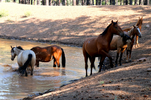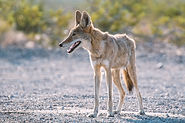Cliff Chipmunk
Neotamias dorsalis

Listen for their sharp chirps; best seen near rocky outcrops
The cliff chipmunk is a small, striped chipmunk commonly found on rocky slopes, canyon walls, cliffs, and forested edges. Adapted for agility, it is quick and sure-footed, often seen darting among rocks or climbing steep terrain in search of food. These chipmunks feed on seeds, berries, nuts, and vegetation, storing extra food in burrows or rock crevices for later use. They are most active during the day, especially in the early morning and late afternoon, when they can be spotted foraging or pausing on rocks to survey their surroundings. Though small, their alert movements and distinctive stripes make them easy to recognize against rocky backdrops. The cliff chipmunk plays an important role in its ecosystem by dispersing seeds and providing prey for larger predators, while also adding lively activity to Arizona’s canyon and mountain landscapes.
Mammal

Identification & Behavior
Key Features: Brownish fur with light and dark stripes along back
Size: 7–9 in long; 2–3 oz
Behavior: Quick, alert, and highly vocal when alarmed
Diet: Seeds, nuts, berries, insects
Activity Pattern: Diurnal
Habitat & Distribution
Found statewide in rocky cliffs, canyon slopes, and forested areas. Prefers talus slopes and steep canyon walls near Mogollon Rim, Grand Canyon cliffs, and Superstition Mountains. Present in Coconino, Prescott, Apache-Sitgreaves, and Kaibab National Forests.
Elevation Range: 5,000–9,500 ft
Seasonal Presence: Year-round
Risks & Management
Do not feed; feeding encourages dependency and aggression









































